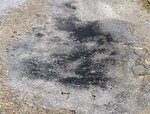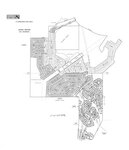


DENHAM SPRINGS — Greg Byrd has grown accustomed to the most frequent topic of calls he receives as president of Southpoint Homeowners Association — and he wishes that would change.
Byrd fields a slew of calls about the dilapidated roads along Southpoint Boulevard and Falcon Crest Road.
“It happens every day,” said Byrd, who leases homes and owns lots in the subdivision.
The road conditions in the area are not a new problem. Bumps, cracks and potholes have lined the streets in that area the last five or six years.
The quality has gotten so bad that a Baton Rouge TV station featured the subdivision on a profile of the worst roads in the area.
“We’re not asking for anything other than to get our roads fixed — and to not be on TV again,” Byrd said.
Approximately 750 homeowners live in the subdivision, nestled along La. 16. Despite its classification as a residential area, the roadways have become a cut-through for motorists on Brown Road to drive to La. 16 as an alternate route.
The use of at least 1,500 vehicles from within the subdivision, along with the extra traffic from the diversion, has put tremendous strain on a roadway for an area that has surged in population in just 10 years.
Byrd blamed Dallas-based developer D.R. Horton — which proclaims itself in advertisements as “America’s Builder” — for the poor quality of roads in the subdivision.
“They put down the absolute minimum (asphalt and concrete) for those roads,” he said.
The road conditions have worsened to a degree that it has triggered an exodus in residents from the subdivision, Byrd said.
“A lot of people have left and that has hurt the property value,” he said. “If you had something like that, would you want to live there?
“It’s the most important investment you make, but you don’t want to lose money on it.”
The median home value in the subdivision runs around $150,000.
“We’re not talking about a country club here,” Byrd said. “This is a neighborhood full of families wanting to raise kids in a nice, safe environment, close to good schools.”
Byrd said it’s common to see children fall off bicycles when they hit potholes. It has also caused extensive wear-and-tear on vehicles in the subdivision.
“The only good thing is that people can’t speed through there,” he said.
The substandard roads have also been a source of frustration for Parish Council member Joan Landry, who also hears a litany of complaints from residents about the roadways.
“Those two roads are beyond repair and need to be completely done, from the base up,” she said. “The roads were not well built and they’ve suffered ever since.”
Landry wants to see the roads repaved to parish specifications.
“We might be able to patch some of the overlay, but there isn’t enough base,” she said. “You’re supposed to have eight inches of cement, three inches of asphalt — the parish requirement for roads — but that ordinance was enacted in the time since the subdivision was built.”
Many of the roads have been repaired mainly through tar in potholes. It only serves as a short-term problem because heavy rains usually wash them up, Landry said.
“The calls come pouring in after the big gullywashers when tar from the holes comes back,” she said.
The parish Department of Public Works had to fill 900 such potholes last year after Hurricane Isaac, Landry said.
Byrd said the bare minimum does not solve the problems on roadways.
“They’re applying a Band-Aid to a gaping wound,” he said.
Despite the rapid growth of the subdivision, extensive repairs may not come so quickly.
He said the repair process comes with plenty of roadblocks.
“It’s no easy fix,” Byrd said. “The infighting makes it worse and doesn’t help anyone.
“We need a professional to get it going,” he said. “The parish needs to do whatever it takes to make it happen.”
Limited funds and a lengthy wish list for road projects make a repair plan a tough grab, said Landry, who represents the area.
The parish coffers have only $3.7 million for 800 miles of road, split among nine districts.
“Do the math, and that’s only a little over $400,000 per district,” Landry said. “But if I could get $400,000, maybe I could get some work on Southpoint and Falcon Crest.”
Southpoint spans .08 miles and Falcon Crest a half-mile.
“If they could get that done, the rest of the money could go to another area that needs repairs,” Landry said.
A complete overlay would cost at least $300,000 per mile, she said.
The process of obtaining the money is as about as bumpy a road as the streets in the subdivision.
Byrd said he is not sure he would support a tax for road repairs if it was brought to parish residents.
“I’m not sure about that — I’d have to think long and hard about it,” he said. “Rather than raise taxes, we should do what we can to drive business to areas.”
Squabbles among council members and between the Council and administration have led to a stalemate on road repairs. The Council has not adopted a road program budget for this year and is currently in a conflict with Parish President Layton Ricks over who controls the hiring of the engineer needed to create the priority list and oversee a contractor.
“It’s up to engineers to decide what comes up on the priority list for overlay or patching, but there’s a lot of politics going on,” Landry said. “Several councilmen have said because two roads have been done in my district, money should go elsewhere.
“Great kudos to them for getting Eden Church Road and Cook Road done, but it shouldn’t mean I should get less money for District 5, where subdivisions are falling apart,” she said.
Landry believes the final decision on road repairs should rest on the shoulders of engineers.
“Maybe that would keep the politics out of it,” she said. “There’s a lot of roads on the list, but not enough money to go around.”
Areas with high amounts of traffic qualify for matching funds.
“Some of the money is from grant money, some from federal money, but we have to match some of it — it has to come from our road money,” Landry said. “Does it mean I should get less because some of that money is spent in my district? I don’t think so.”
Byrd said he’s not concerned about how the parish goes about doling out funds, as long as it results in repairs for the subdivision.
“All we want is our fair share,” he said. “We don’t want more delays.
“What I don’t understand is that the parish pays the same price for repair no matter what, so what’s holding them?” he said. “It all sounds political, and we could eliminate that step.”
In the meantime, Byrd has jockeyed support from residents, who have made their presence known to council members.
“We’ve gone to meetings and sent letters to people to make our voice heard to the Parish Council,” he said.
Byrd said Landry has been supportive of their needs, but the association needs the support of additional council members.
“She’s been at our meetings, and has been upfront with us,” he said. “We want the Parish Council to stop delaying the process.”
He believes the parish should end turf wars and address the problems at hand.
“I don’t care who does it — we just want it to get done,” Byrd said.
“You can accomplish anything as long as you don’t have everyone wanting to take credit, and that’s what people need to take into consideration here.”